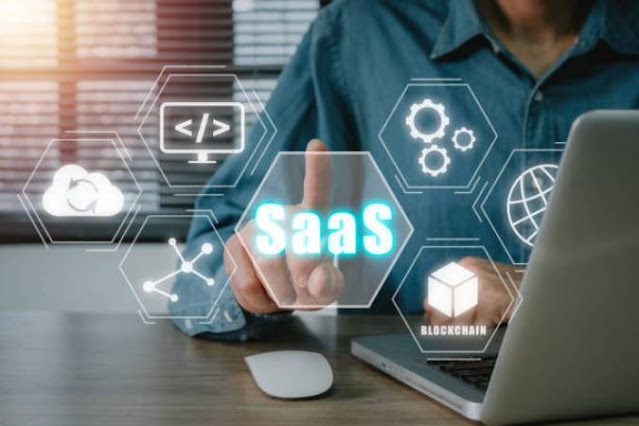A Complete Guide to Marketing Platforms: Definition, Types

A Complete Guide to Marketing Platforms: Definition, Types
Introduction:
In the fast-paced worlds of technology, fashion, and
splendor, effective advertising strategies are crucial for manufacturers to
stand out and interact with their target audience. By leveraging revolutionary
advertising structures, these industries can create memorable campaigns and
surprise consumers with unexpected reports. This article explores the
intersection of marketing platforms in technology and sudden fashion and
splendor, showcasing the numerous structures available and their effect on
brand recognition, purchaser engagement, and sales.
Social Media Platforms:
a. Instagram: Instagram has turn out to be a go-to platform
for fashion and beauty manufacturers to exhibit their merchandise, engage with
purchasers, and foster logo communities. Brands leverage great visuals,
influencer partnerships, and interactive capabilities like Stories and Reels to
captivate their target market and pressure conversions. Instagram's purchasing
tags and swipe-up quality decorate the consumer's purchasing enjoy, facilitating
seamless transactions.
B. TikTok: With its explosive increase, TikTok offers brands
an possibility to faucet into a younger, noticeably engaged target market.
Fashion and splendor brands leverage TikTok's quick-shape video format to
create entertaining and informative content, take part in viral challenges, and
collaborate with popular creators. TikTok's algorithm-driven content discovery
ensures that brands can fast advantage visibility and surprise visitors with
particular and unexpected content.
Influencer Marketing:
a. Brand Ambassadors: Fashion and beauty brands collaborate
with influencers to serve as logo ambassadors. These influencers promote
merchandise, percentage their reviews, and provide genuine suggestions to their
committed followers. By leveraging the influencer's credibility and target
market believe, manufacturers can wonder purchasers with personalised and
relatable content.
B. Micro-Influencers: Micro-influencers, with smaller
however extraordinarily engaged followings, provide an opportunity for niche
style and beauty manufacturers to hook up with their target market on a more
personal level. Micro-influencers often have a devoted and dedicated following,
making them precious partners for unexpected and delighting niche purchaser
segments.
Augmented Reality (AR) and Virtual Reality (VR):
a. Virtual Try-On: Brands within the style and beauty
industries leverage AR era to provide virtual try-on stories. Customers can
sincerely attempt on clothing, accessories, and make-up products, permitting
them to visualize the gadgets before purchasing. This fantastic and interactive
revel in complements client pleasure and self assurance in buying decisions.
B. Virtual Showrooms: VR technology enables fashion brands
to create immersive digital showrooms and experiences. Customers can discover
collections, attend digital style suggests, and have interaction with virtual
models. These revolutionary and surprising experiences increase emblem
engagement and depart a lasting impression on clients.
Interactive Websites and E-commerce:
a. Personalized Recommendations: Brands leverage generation
to offer personalised product guidelines on their websites and e-trade
structures. By reading customer statistics, manufacturers can marvel customers
with tailored suggestions, making the purchasing experience greater exciting
and growing the probability of conversions.
B. Interactive Features: Websites and e-commerce structures
can incorporate interactive capabilities like chatbots, quizzes, and product
configurators. These functions surprise and have interaction purchasers,
providing an immersive and customized buying journey.
Experiential Marketing:
a. Pop-Up Stores and Events: Brands create precise and
unexpected reviews via pop-up stores and events. These brief physical areas
permit purchasers to interact with the emblem, explore new merchandise, and
participate in interactive sports. By providing a memorable and unexpected
enjoy, brands can generate buzz, power foot site visitors, and foster a deeper
reference to their target market.
B. Immersive Installations: Technology-driven immersive
installations, inclusive of interactive mirrors, holographic shows, and digital
truth stories, surprise and engage customers uniquely. These installations
create unforgettable emblem reports and generate social media buzz, extending
the reach and effect of the logo's message.
Conclusion:
Marketing structures in technology, fashion, and splendor
offer limitless possibilities for manufacturers to surprise and captivate their
target market. By leveraging social media systems, influencer partnerships,
augmented reality, interactive websites, and experiential advertising and
marketing, brands can create unexpected and noteworthy studies that
differentiate them from competitors. Through those modern advertising and
marketing strategies, brands can forge deeper connections with their customers,
pressure emblem cognizance, and in the long run improve sales within the
dynamic and ever-evolving landscape of generation, fashion, and beauty.


